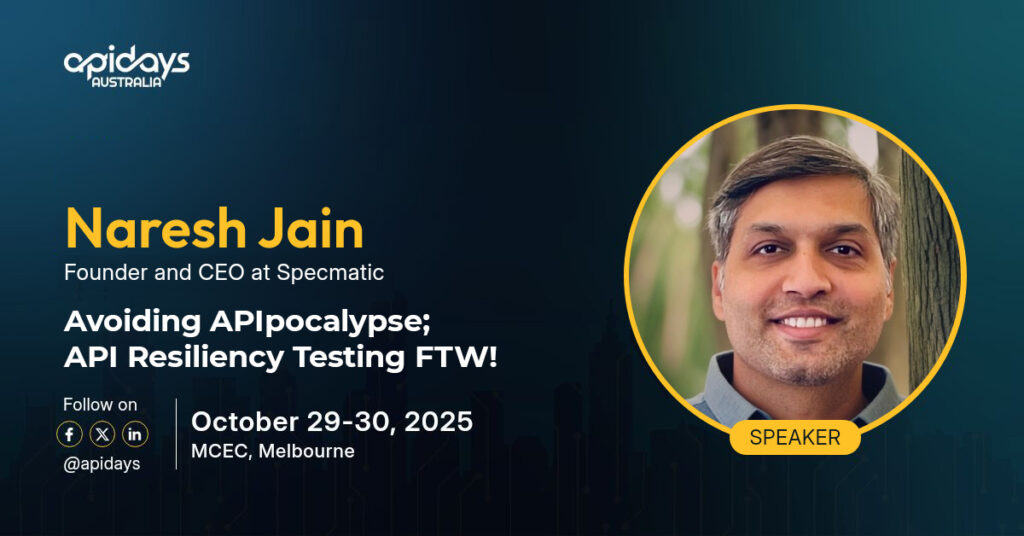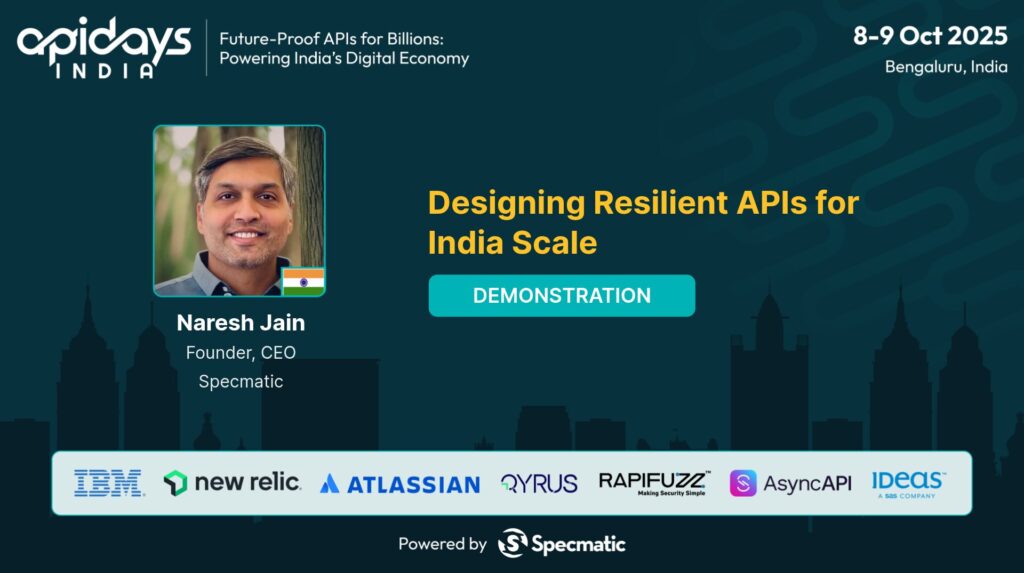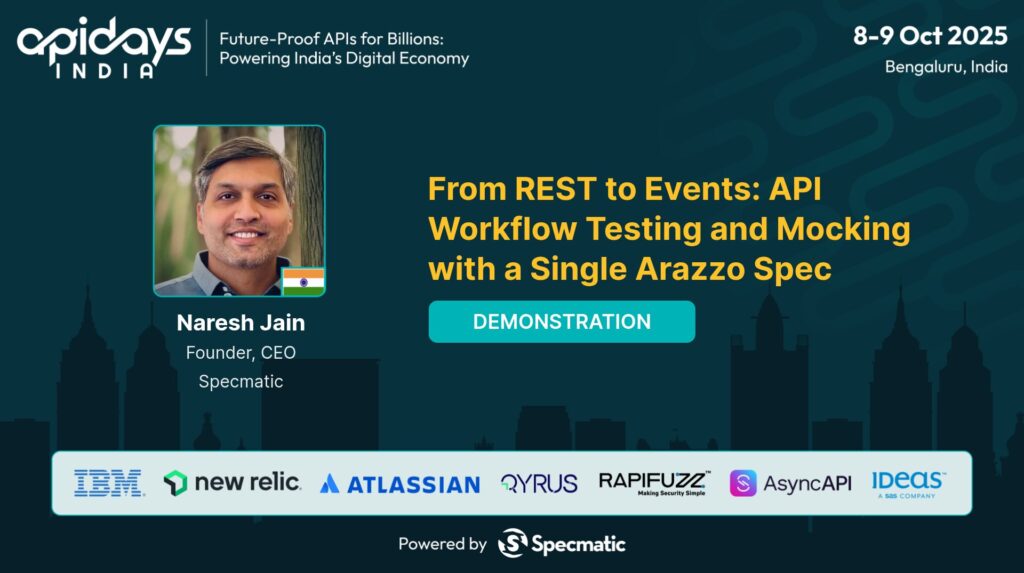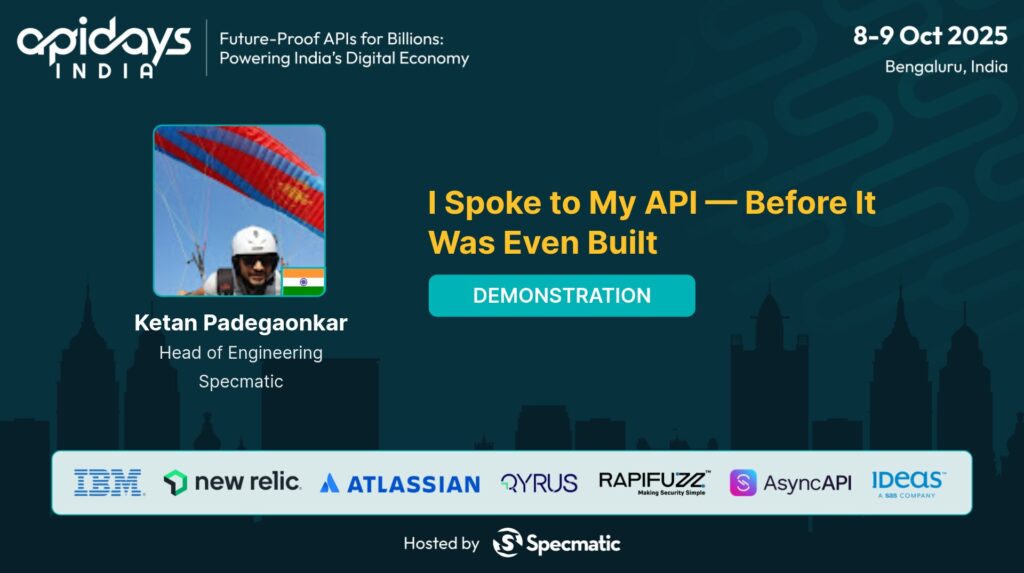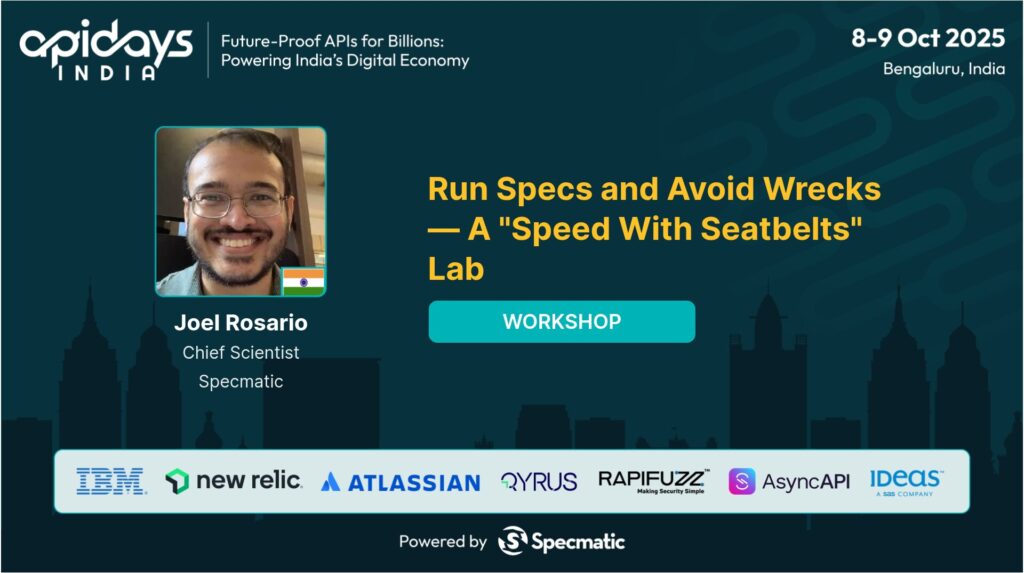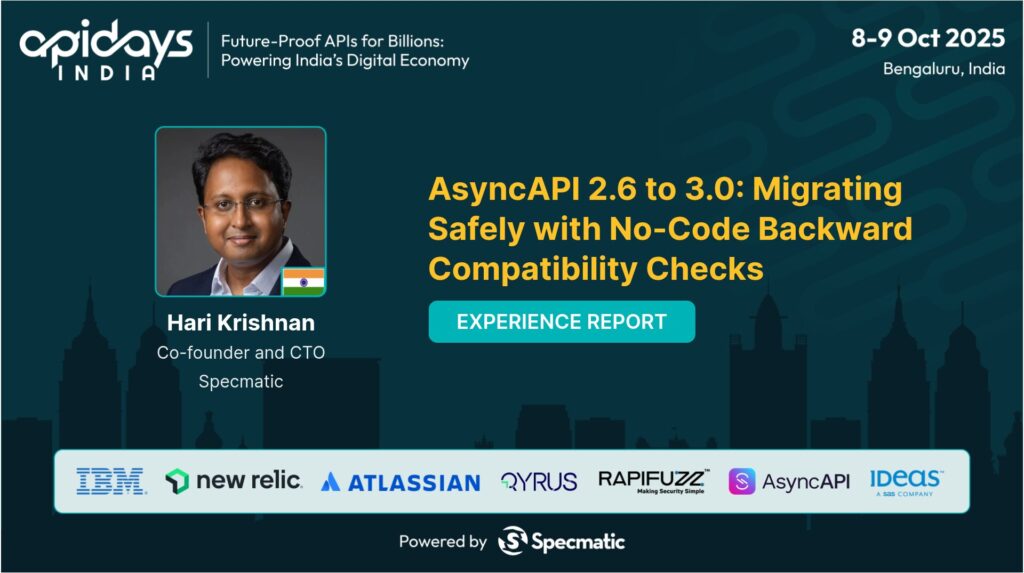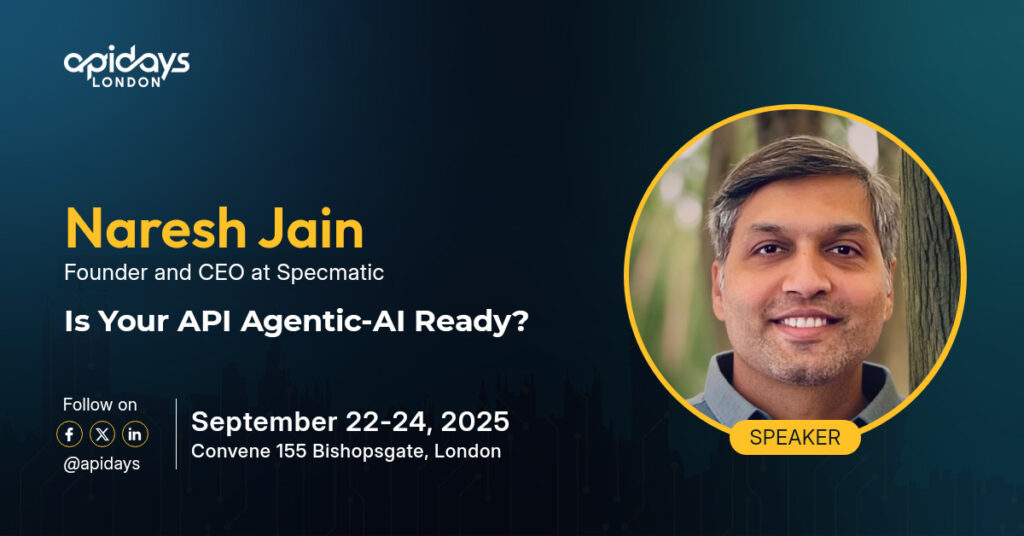Using GraphQL SDL files as executable API Contracts
15 May 2025
New York
Summary
Building applications that rely on APIs requires seamless coordination between consumers and providers. This is especially true in GraphQL architectures, where front-end applications interact with GraphQL services through queries and mutations. However, challenges arise when the GraphQL service isn’t yet available, or when discrepancies exist between consumer expectations and provider implementations. To address these challenges, executable API contracts based on GraphQL Schema Definition Language (SDL) files emerge as a powerful solution.
Transcript
Introduction to Executable API Contracts with GraphQL SDL Files
Building applications that rely on APIs requires seamless coordination between consumers and providers. This is especially true in GraphQL architectures, where front-end applications interact with GraphQL services through queries and mutations. However, challenges arise when the GraphQL service isn’t yet available, or when discrepancies exist between consumer expectations and provider implementations. To address these challenges, executable API contracts based on GraphQL Schema Definition Language (SDL) files emerge as a powerful solution.
This presentation explores the concept of using GraphQL SDL files as executable API contracts to enable contract testing, mocking, and backward compatibility checks without writing any extra code. It draws from the insights shared by Hari Krishnan, Co-founder and CTO at Specmatic, highlighting practical approaches to API governance, contract-driven development, and ensuring smooth integration between GraphQL consumers and providers.
The Problem Space: Challenges in GraphQL API Development
Imagine you are building a mobile or front-end application that depends on a GraphQL service to fetch data tailored to your needs. You send queries and mutations to this service and receive responses accordingly. But what happens if the GraphQL service is not yet implemented? Waiting for its completion is not an option because feature delivery timelines must be met.
A common approach to this dilemma is to create a mock GraphQL service. Developers might use the GraphQL SDL file itself to stand up mocks or write custom mock implementations. While this helps advance front-end development independently, it introduces a significant risk: the mock may deviate from the actual service when it becomes available.
Such divergence leads to integration issues during deployment. For example, the front-end developer may consider a field like pageSize optional, while the provider expects it to be mandatory. The mock might allow the front end to function without pageSize, but the real service will reject requests missing this field. Similarly, data type mismatches—such as expecting an integer but receiving a string—can cause failures that are difficult to detect early.
This broken integration is rarely discovered on local development machines or continuous integration (CI) pipelines because mocks isolate the consumer from the real provider. The provider team, working independently, may be unaware of consumer assumptions. The problem surfaces only during integration testing, often leading to environment-wide failures that delay production releases and increase the cost of bug fixes.
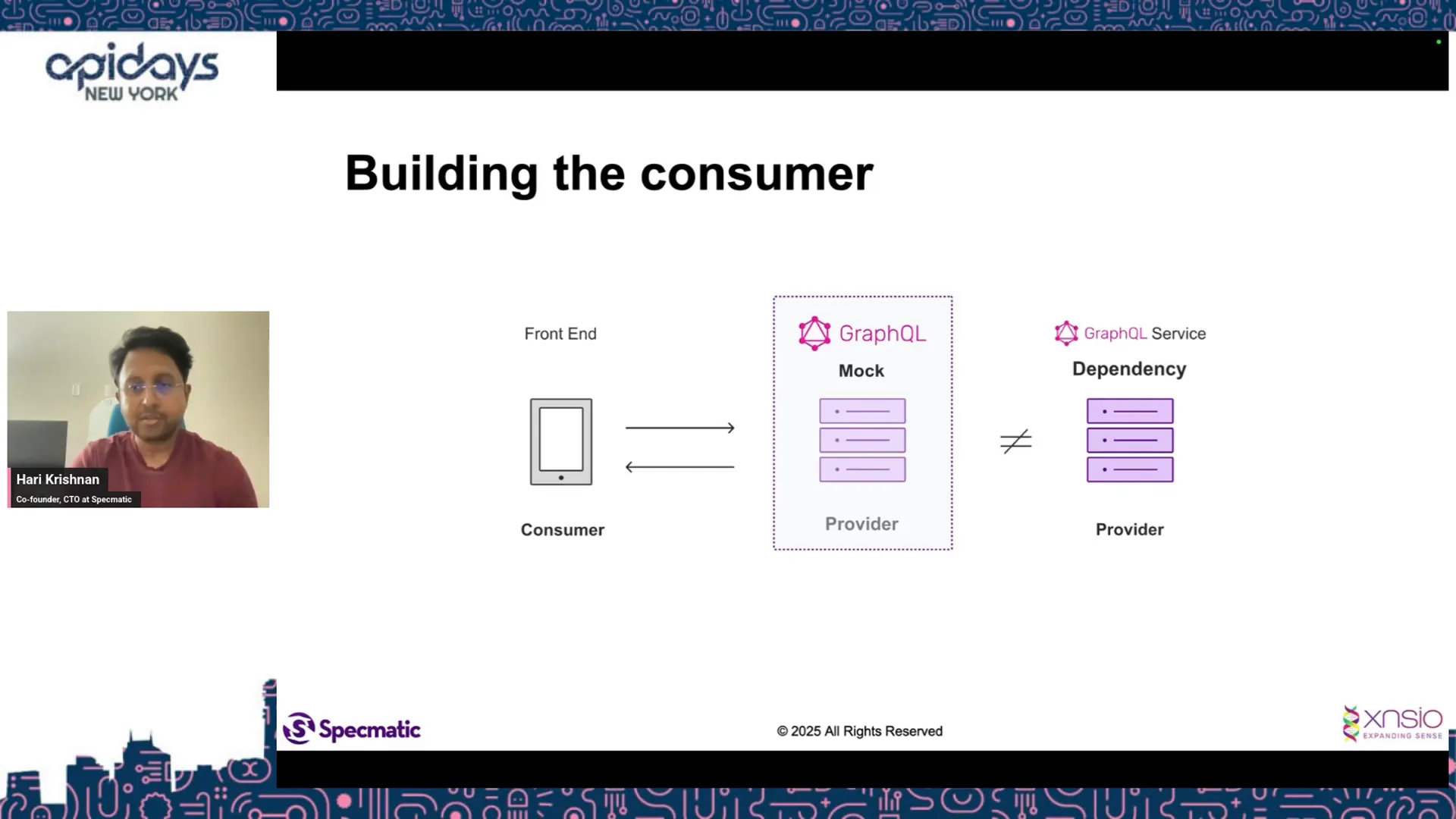
Why Shift Left? Early Detection of Contract Compatibility Issues
The core problem is late detection of compatibility issues between consumer and provider. The goal is to “shift left”—to identify contract mismatches as early as possible, ideally during development or even API design phases. This early detection reduces expensive fixes and accelerates delivery.
Executable API contracts based on GraphQL SDL files enable this shift left by providing a single source of truth that governs interactions between consumer and provider. By using the SDL file to generate tests and mocks automatically, teams can validate adherence to the contract continuously and independently.
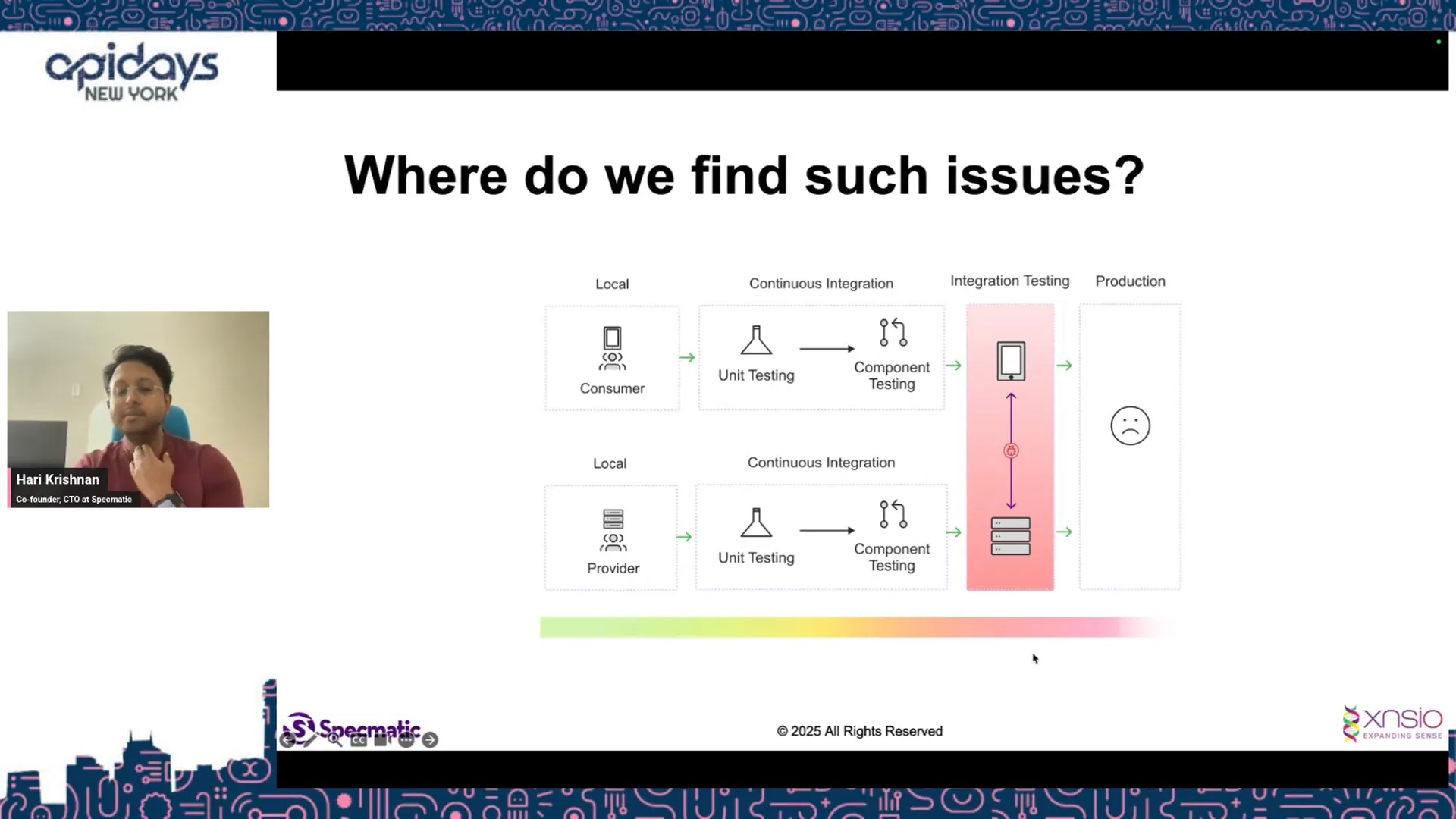
Leveraging GraphQL SDL Files for Contract Testing
Contract testing ensures that the provider implementation conforms to the GraphQL SDL file agreed upon by both consumer and provider teams. Specmatic, a powerful tool in this space, can read the GraphQL SDL file and generate executable tests on the fly without requiring manual test code maintenance.
Consider a typical setup:
- A front-end application (consumer) sends queries and mutations to a GraphQL back-end-for-front-end (BFF) service.
- The BFF service in turn calls downstream REST services, governed by OpenAPI specifications.
- The GraphQL SDL file defines the contract between the front end and the GraphQL service.
- The OpenAPI spec defines the contract between the GraphQL service and the REST services.
In this architecture, Specmatic can use the GraphQL SDL file to generate contract tests that verify the GraphQL service implementation. Meanwhile, the REST dependencies can be stubbed using the OpenAPI specification, avoiding reliance on actual downstream services during testing.
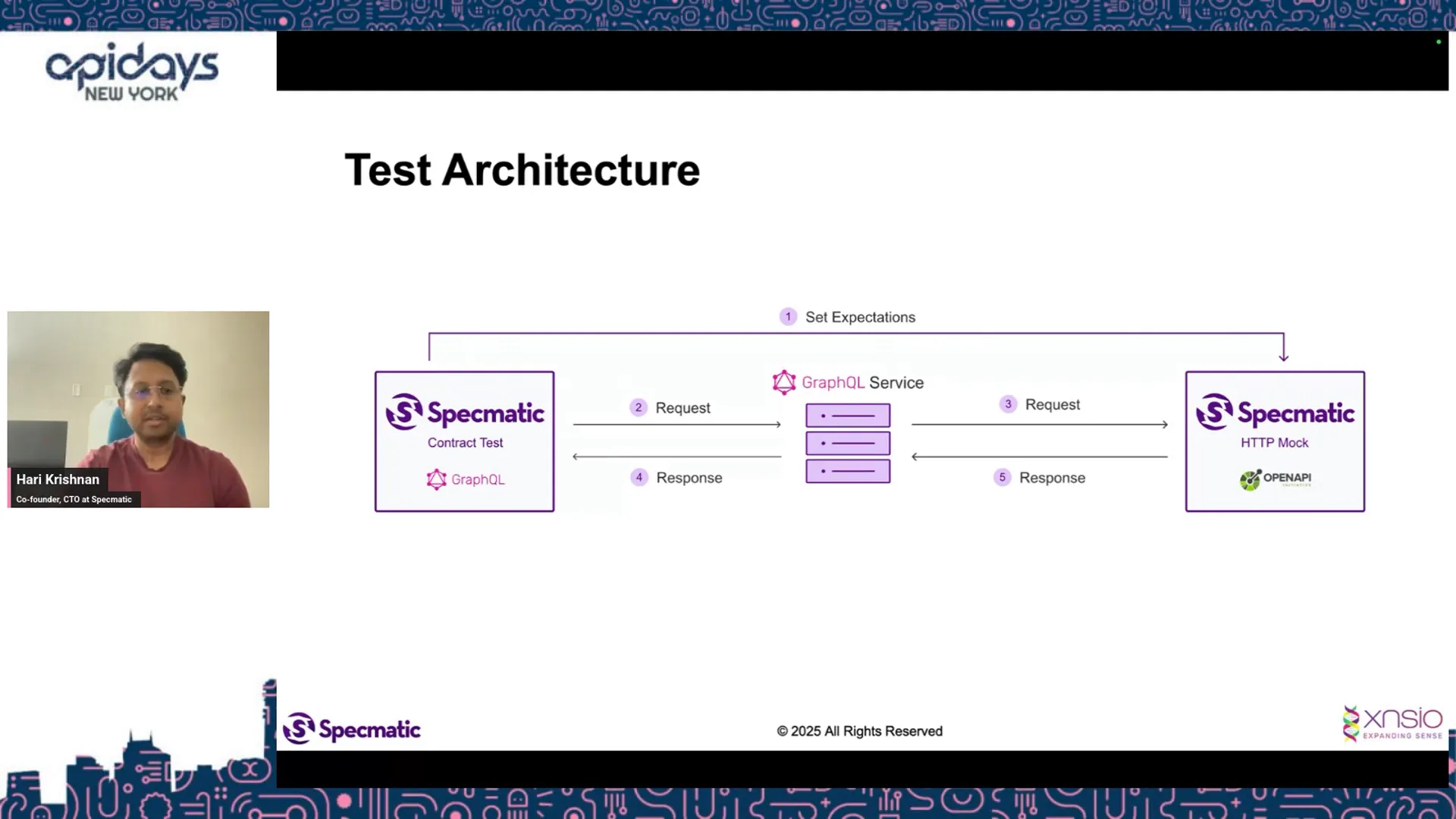
Demo Walkthrough: Running GraphQL Contract Tests
To illustrate contract testing, Specmatic reads a configuration file (e.g., specmatic.yaml) that specifies the API specifications’ locations. This setup includes two key sections:
- Provides: The GraphQL SDL file exposed by the GraphQL service (the provider).
- Consumes: The OpenAPI specification for the REST services the GraphQL service calls.
Specmatic automatically generates tests for each query and mutation defined in the GraphQL SDL file, using example data provided in external files. For instance, a test named find available products scenario sends a query to the GraphQL service and verifies the response matches the expected data.
These tests run without manually written test code, reacting dynamically to changes in the SDL file. If a new operation is missing in the implementation, the corresponding test fails, providing immediate feedback.
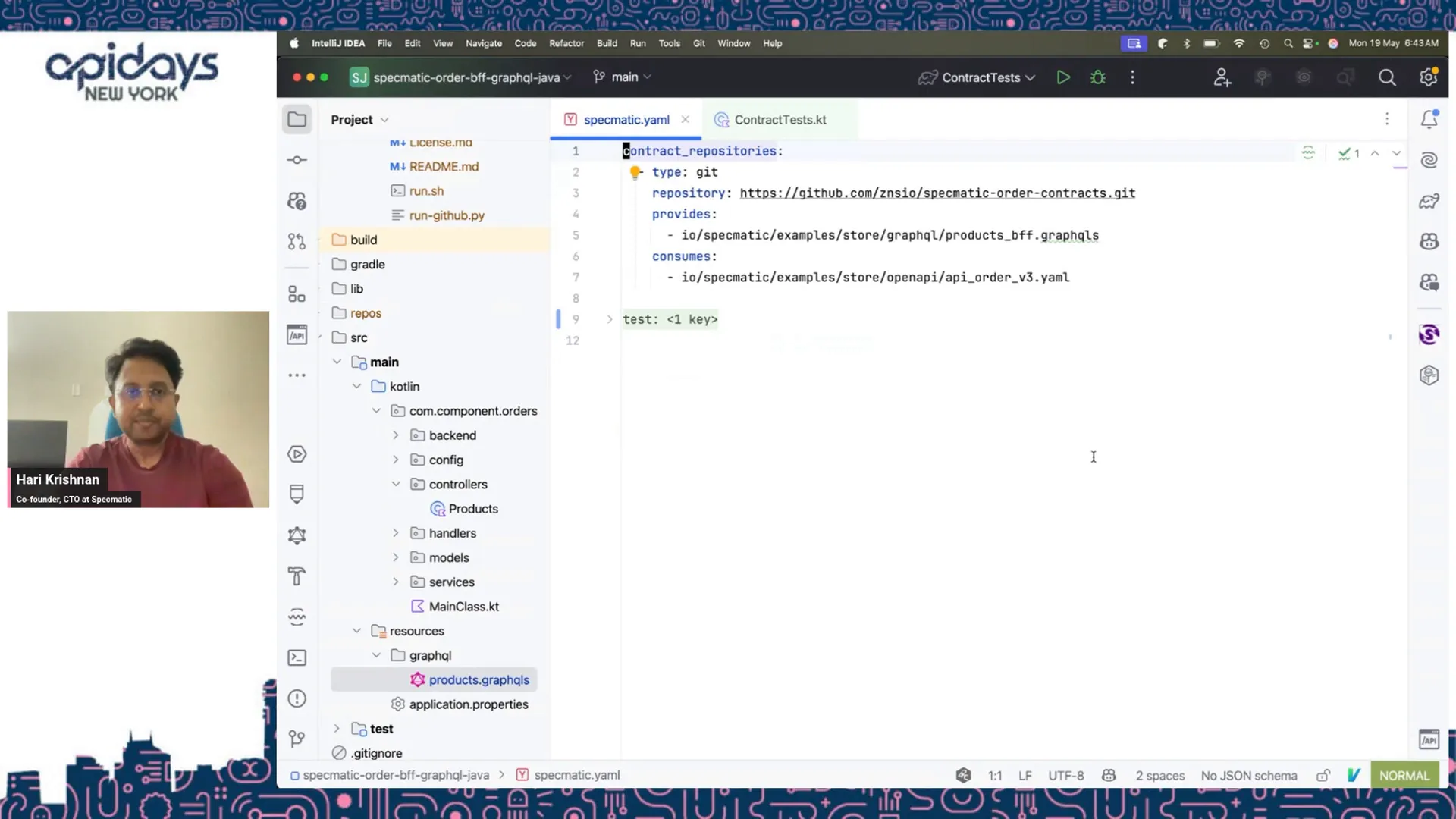
Handling GraphQL SDL File Proliferation and Version Drift
In real-world scenarios, teams may maintain multiple copies of the GraphQL SDL file. Consumers might use one version for mocking, while providers use another for implementation. Over time, these versions can diverge, causing integration problems.
Specmatic addresses this by enabling thorough testing, including resiliency tests that generate both positive and negative scenarios. Negative testing involves deliberately sending invalid or mutated inputs to the application to verify it correctly rejects them.
For example, if a field is non-nullable in the SDL but a test sends a null value, the application should respond with an error. If it accepts the invalid input, this signals a data corruption risk that requires fixing.
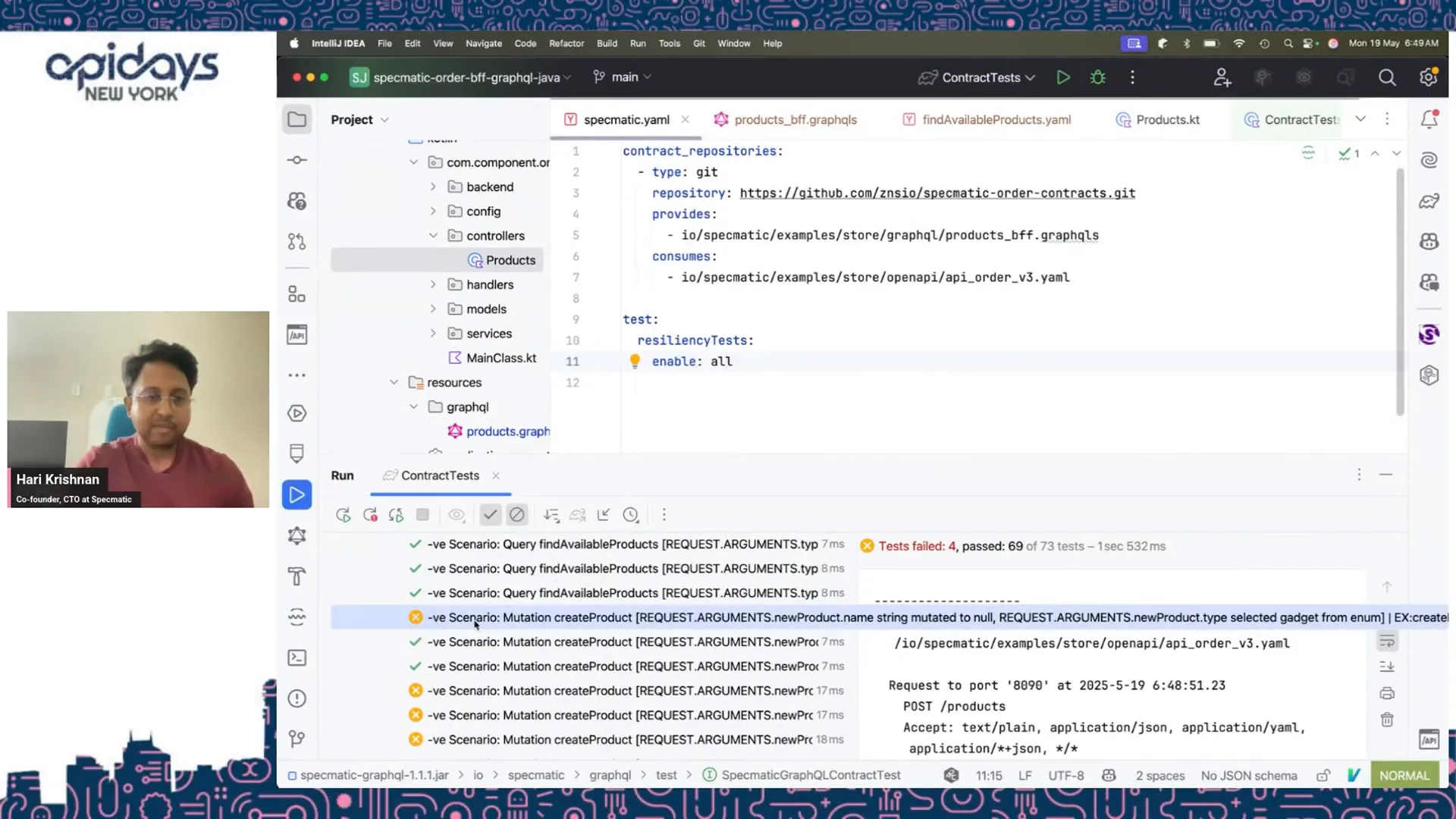
Property-Based Testing and Mutation Testing Concepts
Specmatic’s approach draws inspiration from property-based and mutation testing methodologies:
- Property-Based Testing: Instead of writing individual test cases, define the properties or invariants the system must satisfy. The testing tool then generates many inputs to verify these properties.
- Mutation Testing: Introduce small changes or mutations to inputs to ensure the system detects and handles them appropriately.
The GraphQL SDL file serves as the property definition, specifying data types, mandatory fields, and constraints. Specmatic uses this to generate extensive test cases that explore boundary conditions and invalid inputs automatically.
The Importance of a Central Contract Repository
Maintaining the GraphQL SDL file in a central, version-controlled repository (e.g., Git) is crucial. This central contract repository acts as the single source of truth, ensuring both consumers and providers work with the same API specification.
This approach avoids stale or divergent copies and facilitates:
- Pull Request (PR) workflows for API changes.
- Linting and validation of specifications.
- Backward compatibility checks before merging changes.
- Automated distribution of API specs to developer portals and tooling.
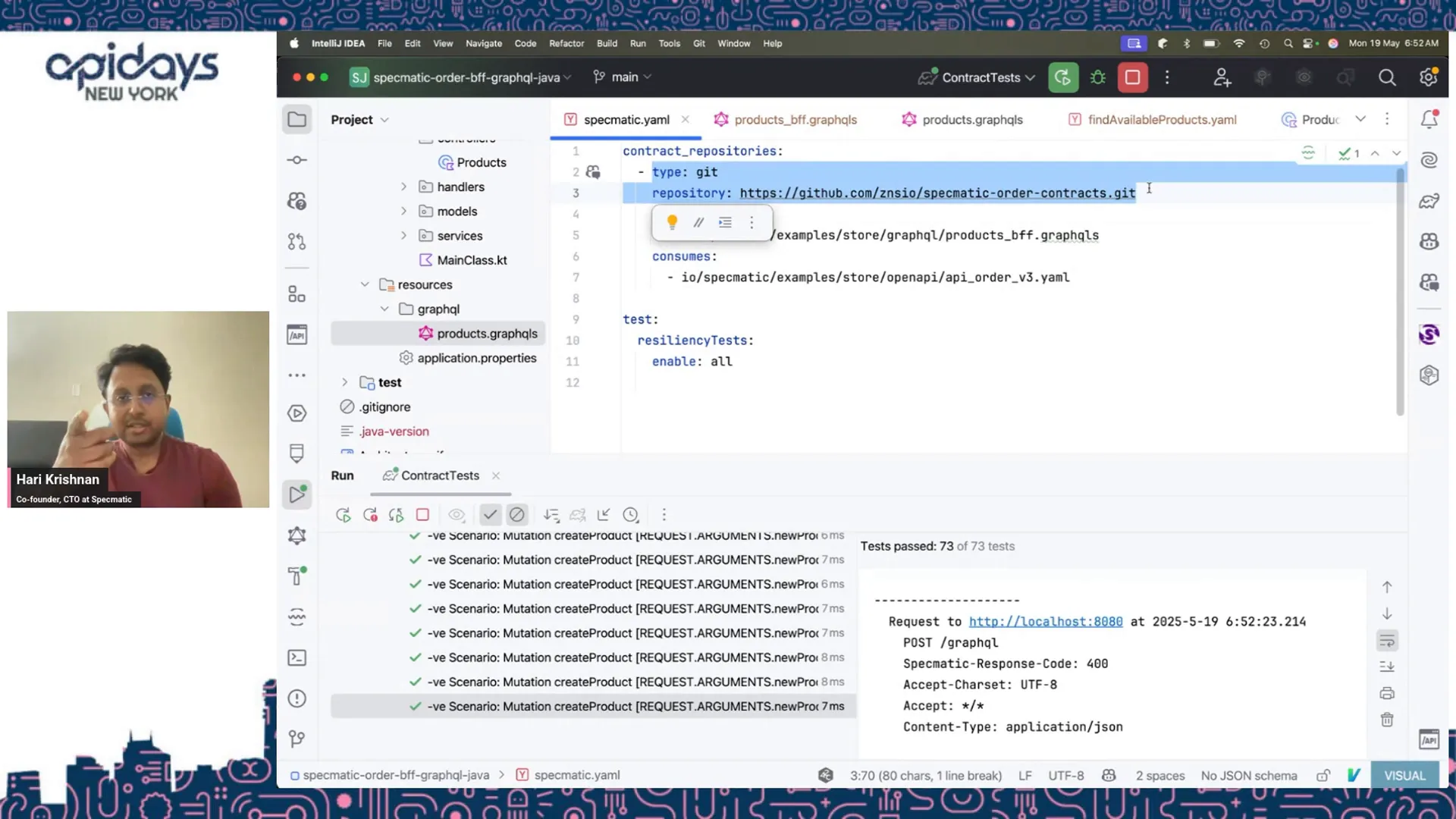
Generating Mock Servers from GraphQL SDL Files
Beyond contract testing, GraphQL SDL files enable automatic mock server generation. This empowers front-end developers to proceed without waiting for back-end services to be ready.
Specmatic can spin up a mock GraphQL server purely from the SDL file and example data. This mock server behaves exactly like a real GraphQL service, responding to queries with realistic data.
Additionally, the mock server supports features such as:
- Selective field responses based on query parameters.
- Fault simulation, such as introducing artificial delays to mimic network latency or server slowness.
- Dynamic data manipulation for testing edge cases.
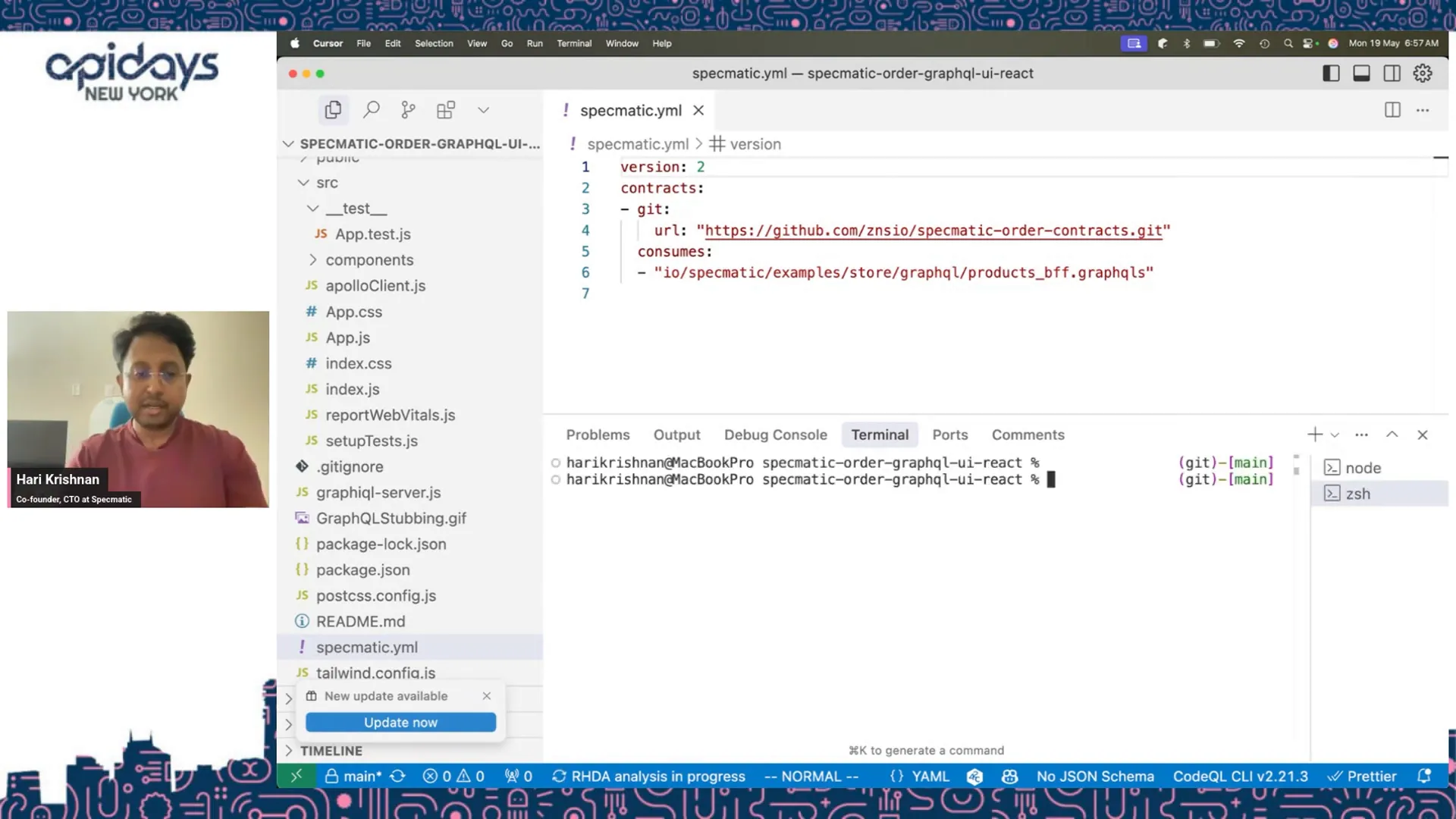
Demo: Using Specmatic as a GraphQL Mock Server for Front-End Testing
In a React application using Apollo Client, Specmatic’s mock server can be integrated seamlessly. The front-end tests interact with the mock server as if it were the real GraphQL service, unaware that it is a stub.
By configuring specmatic.yaml in the React project, the same SDL file used for contract testing can be consumed as a mock. This enables:
- Front-end developers to validate UI behavior against expected API responses.
- Automated UI tests that can run without back-end dependencies.
- Simulation of failure scenarios such as delayed responses to test UI resilience.
The mock server runs on configurable ports and can be started using familiar tools like NPM scripts, Docker containers, or CLI commands.
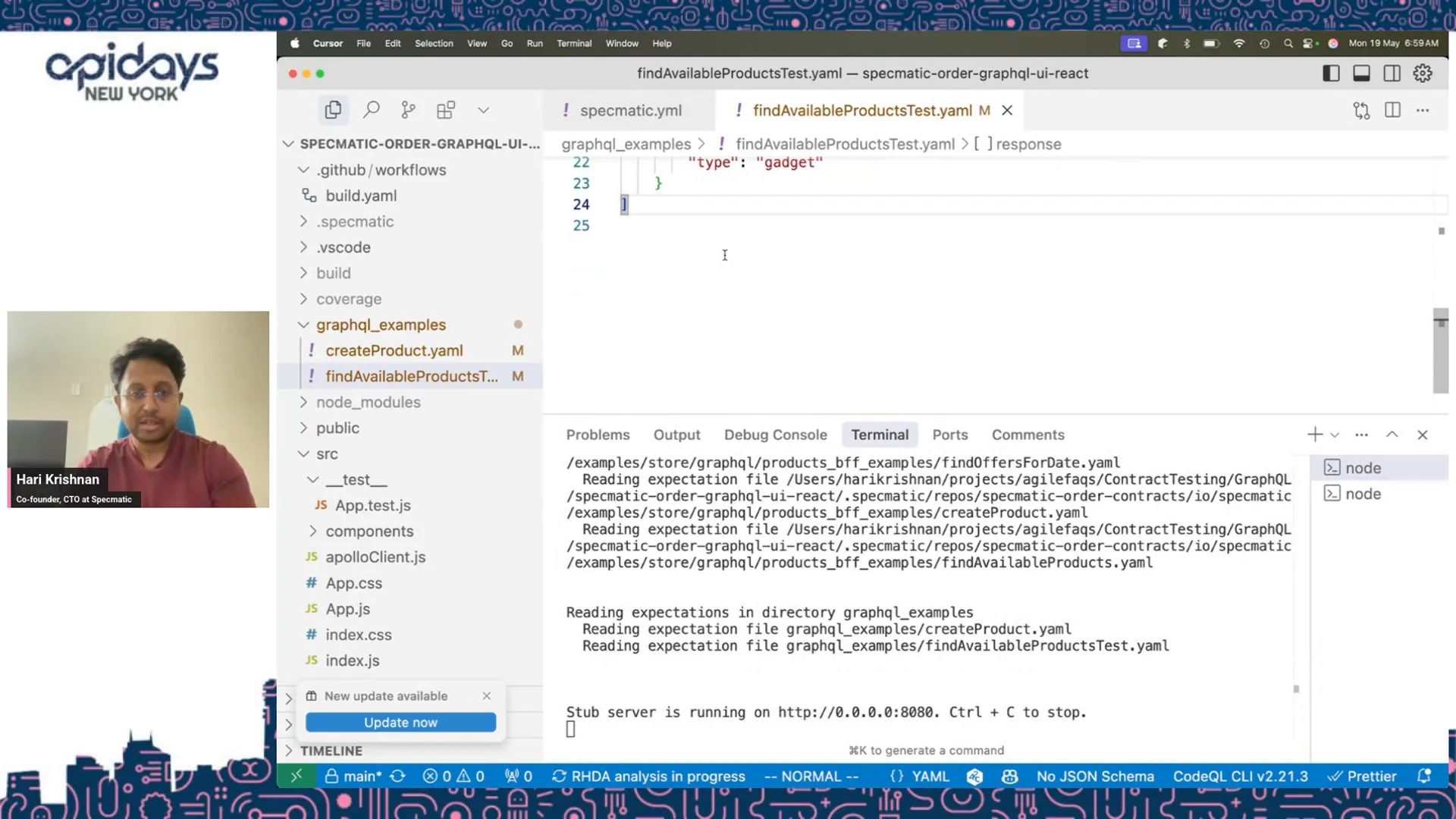
Contract-Driven Development: Aligning Teams Through API Specifications
Contract-driven development emphasizes the API specification as the core artifact guiding collaboration among all stakeholders—developers, architects, security teams, and operations. The specification encapsulates agreements that are often poorly documented or scattered in emails and documents.
By treating API specs as executable contracts, teams gain:
- Clear, unambiguous definitions of API behavior.
- Automated governance through linting, validation, and compatibility checks.
- Independent progress for consumers and providers, reducing blocking dependencies.
- Improved developer experience with free, auto-generated tests and mocks.
- Faster feature delivery through parallel development.
This approach is applicable across various API types, including REST (OpenAPI), event-driven (AsyncAPI), gRPC (proto files), and SOAP (WSDL), with GraphQL SDL files being the focus here.

Ensuring Backward Compatibility with Loop Tests
API evolution is inevitable, but breaking changes can disrupt consumers and delay releases. Identifying breaking changes early is vital. Specmatic introduces a novel “loop test” method for backward compatibility:
- Run the new GraphQL SDL file as a mock server.
- Run the previous SDL file as a contract test against this new mock.
- If all tests pass, the new SDL is backward compatible.
This technique requires no code changes and leverages existing API specifications to verify that new versions do not break existing clients. It can be integrated into CI pipelines to enforce compatibility on every PR.
For example, removing an enum value in the new SDL that was present in the old one will cause the test to fail, signaling a backward compatibility violation.

Building Resilient APIs with Executable Contracts
Executable API contracts based on GraphQL SDL files help build resilient API blocks by:
- Verifying negative test cases to prevent data corruption and invalid input acceptance.
- Allowing consumers to simulate faults such as delays and errors to test application resilience.
- Enforcing strict adherence to API behavior and data types.
This leads to confident, independent service development and deployment, reducing integration risks and accelerating time to market.
Frequently Asked Questions (FAQ)
What is an executable API contract in the context of GraphQL?
An executable API contract is a GraphQL SDL file that is not just a static specification but is used to generate tests and mocks automatically. This ensures that both the API provider and consumer adhere strictly to the agreed schema, enabling early detection of contract violations.
How does Specmatic use GraphQL SDL files for contract testing?
Specmatic reads the GraphQL SDL file and automatically generates tests for each query and mutation defined. It uses example data to validate responses from the GraphQL service implementation, ensuring compliance without manual test coding.
Can executable contracts help with mocking GraphQL services?
Yes. The same SDL file can be used by Specmatic to spin up a mock GraphQL server that responds to queries with realistic data. This allows front-end teams to develop and test independently from back-end availability.
Why is a central contract repository important?
Maintaining the API specification in a central, version-controlled repository ensures that all teams work from the same source of truth. It prevents divergence, supports governance through PR workflows, and enables automated validation and compatibility checks.
How can backward compatibility be tested automatically?
By running the older version of the GraphQL SDL file as a contract test against the new version running as a mock server, you can verify if the new API remains compatible with existing consumers. Any breaking changes will cause test failures, allowing early fixes.
What benefits does contract-driven development provide?
Contract-driven development aligns teams around a shared API specification, reduces ambiguities, enables parallel development, improves developer experience with automated tests and mocks, and accelerates feature delivery by minimizing integration issues.
Is coding required to use GraphQL SDL files as executable API contracts?
No. The approach is no-code in nature. All tests and mocks are generated automatically from the SDL file and example data, eliminating the need for manual test code or mock implementations.
Can this approach simulate failure scenarios?
Yes. Mock servers generated from SDL files can simulate faults such as response delays, allowing teams to test application resilience to network or server issues without writing additional code.
Conclusion
Using GraphQL SDL files as executable API contracts transforms the way teams govern, test, and develop APIs. By automating contract testing, mocking, and backward compatibility checks directly from the API specification, teams can shift left, catch integration issues early, and accelerate delivery cycles.
This approach fosters collaboration, reduces costly late-stage bugs, and empowers independent development of consumers and providers. As microservices and GraphQL architectures become more prevalent, executable API contracts are an essential strategy for building resilient, scalable, and maintainable systems.
Embracing contract-driven development with tools like Specmatic and maintaining a central contract repository ensures that your API ecosystem remains healthy and aligned, ultimately delivering better software faster.


